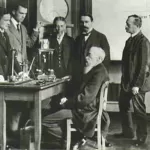Perception is the intricate process through which we interpret and make sense of the sensory information gathered from our environment. The study of perception involves a deep exploration of how our mind organizes and interprets the world around us. In this blog, we will delve into two significant approaches to the study of perception—Gestalt and physiological perspectives—along with key concepts such as perceptual organization, constancy, and the influential roles of motivation and learning.
I. Approaches to the Study of Perception:
- Gestalt Approach:
- Emphasizes the holistic nature of perception, asserting that we perceive objects and scenes as organized wholes.
- Key principles include proximity, similarity, continuity, closure, and simplicity.
- Gestalt psychologists argue that the mind actively organizes sensory stimuli into meaningful patterns.
- Physiological Approach:
- Explores the neural and physiological processes that underlie perception.
- Investigates how sensory information is transduced, processed, and interpreted by the brain.
- Involves studying the functions of sensory receptors, neural pathways, and brain structures related to perception.
II. Perceptual Organization:
- Gestalt Principles:
- Proximity: Objects close to each other are perceived as a group.
- Similarity: Similar objects are grouped together.
- Continuity: The mind perceives continuous, flowing lines or patterns.
- Closure: Incomplete figures are mentally completed to form a whole.
- Simplicity: The mind tends to interpret stimuli in the simplest way possible.
- Figure and Ground:
- Involves distinguishing between the main object of focus (figure) and the surrounding background (ground).
- Our perception alternates between figure and ground, shaping our interpretation of visual scenes.
- Law of Organization:
- Gestalt psychologists proposed laws that govern perceptual organization.
- Examples include the Law of Common Fate (elements moving in the same direction are grouped) and the Law of Pragnanz (we tend to perceive objects in their simplest form).
III. Perceptual Constancy:
- Size Constancy:
- The ability to perceive an object’s true size despite changes in its distance.
- Our perception adjusts to maintain a stable size impression.
- Shape Constancy:
- Involves perceiving the true shape of an object despite changes in its orientation.
- Our brain compensates for variations in viewing angles.
- Colour Constancy:
- The ability to perceive the consistent colour of an object under different lighting conditions.
- The brain adjusts for changes in illumination to maintain colour perception.
IV. Perception of Form, Depth, and Movement:
- Form Perception:
- Gestalt principles contribute to the organization of visual elements into meaningful forms.
- Recognizing shapes, patterns, and objects involves complex cognitive processes.
- Depth Perception:
- Involves the ability to perceive the spatial relationships between objects in a three-dimensional world.
- Binocular cues (such as retinal disparity) and monocular cues (like linear perspective) contribute to depth perception.
- Movement Perception:
- Our ability to perceive motion is influenced by both visual and cognitive factors.
- Gestalt principles play a role in how we perceive the movement of objects.
V. Role of Motivation and Learning in Perception:
- Motivation:
- Motivational factors can influence what and how we perceive stimuli.
- Emotions, desires, and goals can shape our attention and interpretation of sensory information.
- Learning:
- Our past experiences and learning play a crucial role in shaping perceptual processes.
- Learning can influence our ability to recognize patterns, interpret visual scenes, and make sense of complex stimuli.
Conclusion:
The study of perception is a fascinating journey into the intricate workings of the mind. Through Gestalt principles and physiological approaches, we gain insights into how our brain organizes and interprets sensory information. The concepts of perceptual organization, constancy, and the roles of motivation and learning highlight the dynamic nature of perception, illustrating how our experiences and cognitive processes shape our understanding of the world. As we unravel the complexities of perception, we gain a deeper appreciation for the remarkable capabilities of the human mind in making sense of the rich tapestry of sensory input that surrounds us.







